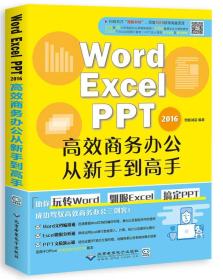
计算理论导引(英文版·第3版)
¥ 34.04 3.8折 ¥ 89 九五品
仅1件
河北廊坊
认证卖家担保交易快速发货售后保障
作者[美]迈克尔西普塞(Michael Sipser)
出版社机械工业出版社
出版时间2018-07
版次1
装帧其他
货号A6
上书时间2024-12-25
- 在售商品 暂无
- 平均发货时间 13小时
- 好评率 暂无
- 最新上架
商品详情
- 品相描述:九五品
图书标准信息
- 作者 [美]迈克尔西普塞(Michael Sipser)
- 出版社 机械工业出版社
- 出版时间 2018-07
- 版次 1
- ISBN 9787111602057
- 定价 89.00元
- 装帧 其他
- 开本 16开
- 纸张 胶版纸
- 页数 458页
- 字数 300千字
- 【内容简介】
- 本书由计算理论领域的知名学者MichaelSipser所撰写。他以独特的视角,系统地介绍了计算理论的三大主要内容:自动机与语言,可计算性理论,计算复杂性理论。全书以清新的笔触、生动的语言给出了宽泛的数学原理,而没有拘泥于某些低层次的细节。在证明之前,均有“证明思路”,帮助读者理解数学形式下蕴涵的概念。本书可作为计算机专业高年级本科生和研究生的教材,也可作为研究人员的参考书。
- 【作者简介】
-
Michael Sipser 美国麻省理工学院应用数学系教授,计算机科学和人工智能实验室(CSAIL)成员。他从事理论计算机科学与其他数学课程的教学工作三十多年,目前为数学系主任。他痴迷于复杂性理论,喜欢复杂性理论的教学工作。
加作者照片 - 【目录】
-
CONTENTS
PrefacetotheFirstEdition.iv
To the student.iv
To the educatorv
The frst editionvi
Feedback to the authorvi
Acknowledgments.vii
Preface to the Second Edition.ix
Preface to the Third Edition.xi
0 Introduction.1
0.1 Automata, Computability, and Complexity.1
Complexity theory.2
Computability theory.3
Automata theory3
0.2 Mathematical Notions and Terminology3
Sets.3
Sequences and tuples.6
Functions and relations7
Graphs.10
Strings and languages.13
Boolean logic14
Summary of mathematical terms.16
0.3 Defnitions, Theorems, and Proofs.17
Finding proofs.17
0.4 Typesof Proof21
Proof by construction.21
Proof by contradiction.21
Proof by induction.22
Exercises, Problems, and Solutions.25
PartOne: AutomataandLanguages.29
1 RegularLanguages.31
1.1 Finite Automata.31
Formal defnition of afnite automaton.35
Examples of fnite automata37
Formal defnition of computation40
Designing fnite automata.41
The regular operations44
1.2 Nondeterminism.47
Formal defnition of a nondeterministic fnite automaton53
Equivalence of NFAs and DFAs.54
Closure under the regular operations.58
1.3 Regular Expressions.63
Formal defnition of a regular expression64
Equivalence with fnite automata.66
1.4 Nonregular Languages77
The pumping lemma for regular languages.77
Exercises, Problems, and Solutions.83
2 Context-Free Languages.101
2.1 Context-Free Grammars.102
Formal defnition of acontext-free grammar104
Examples of context-free grammars.105
Designing context-free grammars106
Ambiguity.107
Chomsky normal form108
2.2 Pushdown Automata.111
Formal defnition of a pushdown automaton.113
Example of pushdow automata.114
Equivalence with context-free grammars.117
2.3Non-Context-Free Languages125
The pumping lemma for context-free languages.125
2.4 Deterministic Context-Free Languages.130
Properties of DCFLs.133
Deterministic context-free grammars135
Relationship of DPDAs and DCFGs.146
Parsing and LR(k) grammars.151
Exercises, Problems, and Solutions.154
PartTwo: Computability Theory.163
3 The Church–Turing Thesis.165
3.1 Turing Machines.165
Formal defnition of a Turing machine167
Examples of Turing machines.170
3.2 Variants of Turing Machines.176
Multitape Turing machines176
Nondeterministic Turing machines178
Enumerators180
Equivalence with other models181
3.3 The Defnition of Algorithm182
Hilbert’s problems.182
Terminology for describing Turing machines184
Exercises, Problems, and Solutions.187
4 Decidability.193
4.1 Decidable Languages.194
Decidable problems concerning regular languages.194
Decidable problems concerning context-free languages.198
4.2 Undecidability201
The diagonalization method.202
An undecidable language.207
A Turing-unrecognizable language209
Exercises, Problems, and Solutions.210
5 Reducibility.215
5.1 Undecidable Problems from Language Theory216
Reductions via computation histories.220
5.2 A Simple Undecidable Problem.227
5.3 Mapping Reducibility234
Computable functions.234
Formal defnition of mapping reducibility235
Exercises, Problems, and Solutions.239
6 Advanced Topicsin Computability Theory.245
6.1 The Recursion Theorem.245
Self-reference.246
Terminology for the recursion theorem.249
Applications250
6.2 Decidability of logical theories.252
A decidable theory.255
An undecidable theory.257
6.3 Turing Reducibility260
6.4 A Defnition of Information.261
Minimal length descriptions.262
Optimality of the defnition266
Incompressible strings and randomness.267
Exercises, Problems, and Solutions.270
Part Three: Complexity Theory.273
7 Time Complexity.275
7.1 Measuring Complexity275
Big-O and small-o notation276
Analyzing algorithms.279
Complexity relationships among models.282
7.2 The Class P284
Polynomial time284
Examples of problems in P286
7.3 The Class NP.292
Examples of problemsin NP.295
The Pversus NP question297
7.4 NP-completeness.299
Polynomial time reducibility.300
Defnition of NP-completeness304
The Cook–Levin Theorem304
7.5 Additional NP-complete Problems.311
The vertex cover problem.312
The Hamilto
点击展开
点击收起
— 没有更多了 —












以下为对购买帮助不大的评价